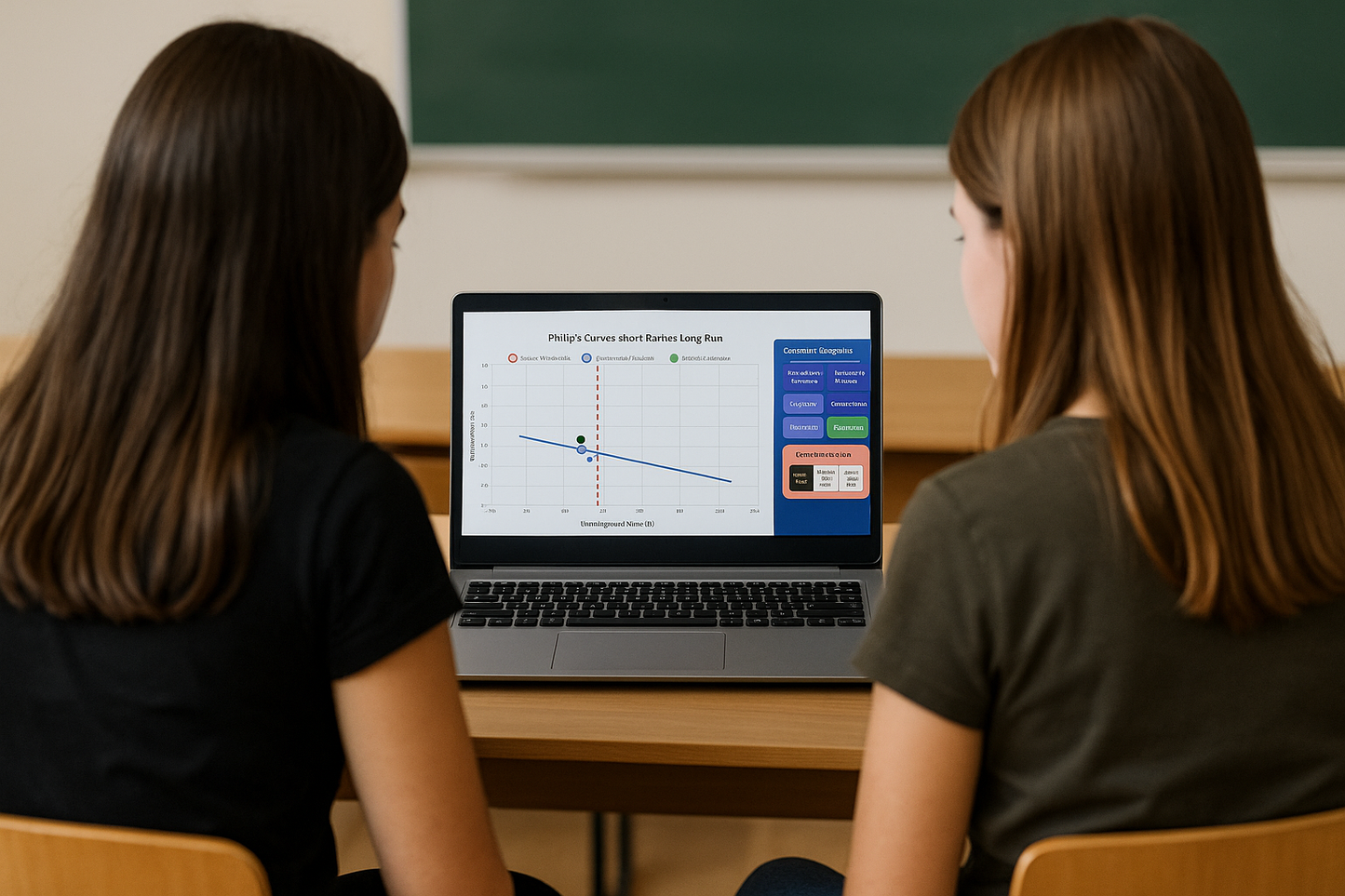BIZ-OMICS
Economics: Phillips Curve Visualiser
Economics: Phillips Curve Visualiser
Couldn't load pickup availability
Bring the Phillips Curve to life with a clean, browser-based simulator that opens instantly on any modern device. The visualiser shows both the short-run trade-off and the long-run neutrality in one place, and it lets students step through historical scenarios—from 1970s stagflation to the Volcker disinflation and the modern era—so theory maps directly onto real data they can see.
Because it’s pure HTML, there’s nothing to install, no logins, and no compatibility headaches. You get a single file that you can drop into your VLE, share by email, or run offline once downloaded—ideal for classrooms with mixed devices or patchy Wi-Fi. The layout is designed for teaching: big, readable axes on the main chart, clear controls for switching scenarios or time horizons, and an “insight” area that surfaces the key takeaway for the moment you’re discussing. If you like to customise, scenario settings and parameters can be edited with simple values, so you can tailor the experience to your exam board examples or local case studies without touching a codebase.
Students don’t just watch curves; they reason with them. By exploring movements along a given SRPC and then watching how shifts occur as expectations change, learners come to understand why the long-run Phillips Curve is vertical at the natural rate of unemployment. They can apply the expectations-augmented relationship π=πe−α(u−u∗)+ε to explain what happens when policy, shocks, or credibility change, and they can contrast demand-side stories with supply-side shocks that produce stagflation. Working through the historical episodes builds confidence in interpreting data, constructing narrative explanations, and evaluating policy trade-offs—precisely the AO1–AO4 blend that exam questions demand.
In practice, the visualiser slips neatly into a lesson flow. Start with the short-run curve alone to elicit the intuitive trade-off; add the long-run curve to challenge the initial conclusion; then load a scenario and ask students to explain how expectations move and why the data point migrates. As an exit ticket or quick assessment, give a change in expected inflation and ask learners to predict the new short-run relationship and where the economy will appear in the next period.
All of this comes in one tidy HTML file that’s easy to project at the front of the room or assign for independent study.
Share


